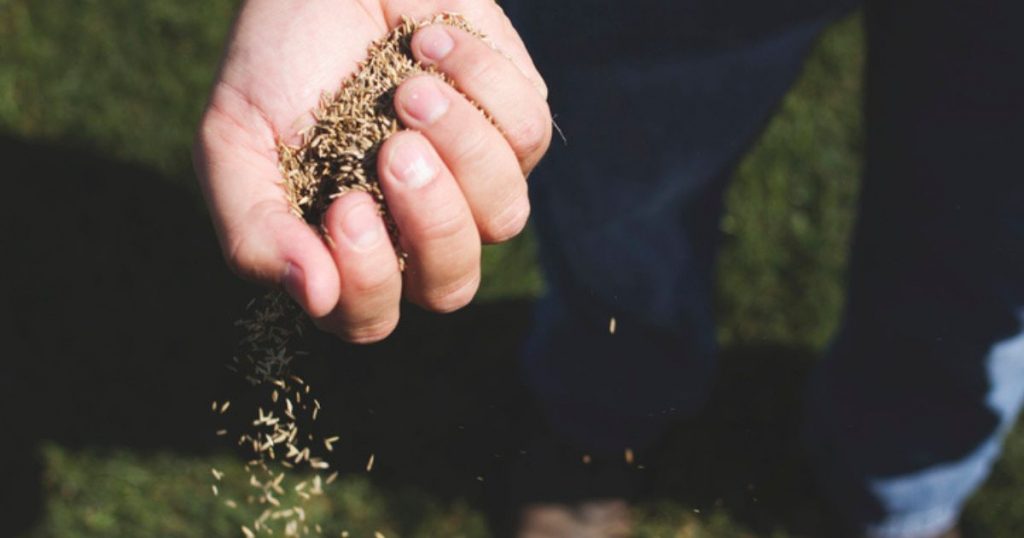Does grass seed go bad when frozen?
Well, this is a common question for people keen on having a good lawn.
Freezing of seeds has varying effects depending on the type of grass in question, how you stored the seeds, and how low the temperatures get.
Grass is divided into warm-season and cool-season grass. The latter is relatively adaptable to low temperatures and has higher chances of germinating even when the temperatures dip below the freezing point for a while than warm-season turf.
How Does Freezing Affect Grass Seed?
Well, does grass seed go bad if it freezes? You might wonder.
There is a proven relationship between seeds and low temperatures especially if the temperature dips below the freezing point.
Most of the time, the low temperature keeps the seeds dormant and viable for a while.
Dormancy is broken by enzymes that are scientifically proven to work best when the temperature is above the freezing point.
These enzymes kick-start a priming process that breaks down the endosperm (nutritive storage tissue) needed for seed germination.
The breakdown supplies the seed with needed nutrients important for the shoot and root development. Keeping the seed temperature low subsequently leads to prolonged dormancy.
The internal seed moisture level of 10 to 20 percent is ideal for most seeds and plays a vital role in germination. Most seeds get this moisture content from their immediate environment, something they can’t get in freezing temperatures since all the water will be in solid form.
If Grass Seed Freezes Is It Still Good?
Yes, grass seed can be stored below freezing and still germinate under the correct conditions.
However, each seed has a biological clock on its dormancy period which freezing beyond it results in seeds going bad.
A seed would ultimately go bad if the freezing despite all conditions met surpasses the sell-by date in the package.
Does Grass Grow After a Freeze?

Well, preserved grass seed will remain viable for up to 60 days in subzero temperatures. However, your seed might fail to germinate if:
- It has already spent a shelf life exceeding its natural viability clock
- The seed was recently exposed to moisture. Any moisture in the seed will crystalize upon freezing hence damaging the seed’s cells
This caveat should not be confused with stratification which allows lawn owners to store grass for up to 90 days. The process closely resembles freezing considering there is seed storage in a refrigerator, but that’s where the similarities end.
Stratification involves soaking seeds in cold water for up to six hours, placing the seeds in a cool humid container like sealed bags then proceeding to refrigerate for 90 days before planting. The refrigeration temperatures should be above the freezing point to maintain the viability of the seeds. The process is only limited to certain cold season grasses and not to their tropical counterparts.
How to Protect Seeds From Frost
You don’t have to do anything to protect your grass seeds from frost. Wild grass seeds in autumn. The seeds lay dormant in the soil through winter and only start germinating when the temperatures pick up in spring.
The only problem is that frost isn’t permanent. Sometimes, the snow and ice thaw prompting the seed to take in moisture. Even if the seeds don’t germinate, this moisture can trigger mold growth or make the seed rot.
Check this too: How To Improve Drainage In Clay Soil Lawn
You can avoid all this by sowing your seed when spring kicks off and you are sure the temperatures won’t dip below freezing point again till next winter.
What Temperature Kills Grass Seed?
If you stored your grass under sub-zero temperatures, it can still germinate. These seeds can survive cold winter temperatures and would take extremely cold temperatures to kill them.
How Do You Know if Grass Seed Is Still Good?
Proper storage prolongs your seeds’ shelf life. For instance, Kentucky Ryegrass can last up to 5 years when properly stored. So how do you establish the viability of your seed after a long period of storage?
The water test
- Put your seeds in a container of water
- Let them stay for 15 minutes
- If the seeds float (They are not viable) If they sink then they are viable.
The germination Test
- Place a row of ten seeds in a row of damp paper towel
- Fold the paper towel and place it in a zip plastic bag and seal it
- Place the paper in a warm place exposed to sunlight
- Verify the dampness of the paper towel daily careful not to let it dry or over-moist it
- Confirm germination after 10 days(Though you can confirm the germination as per your specific seed germination time span)
- Use the number of seeds germinated to calculate the percentage viability of your seeds.
There you have it, a complete guide to maintaining the integrity of your seeds. Pay attention to the different grass variety requirements since one size doesn’t fit all. Also, ensure you store your seeds correctly to avoid losses attributed to storage issues.
